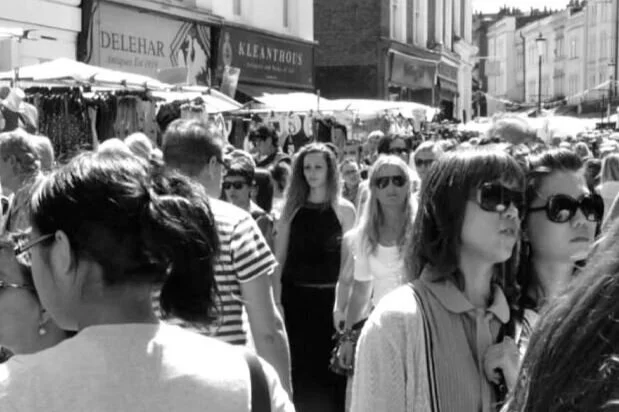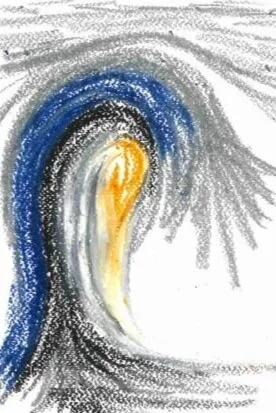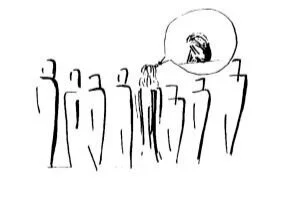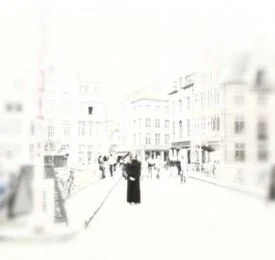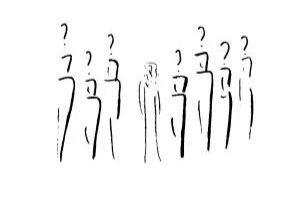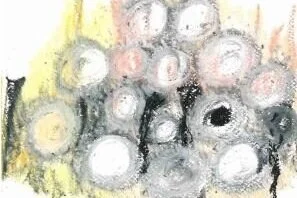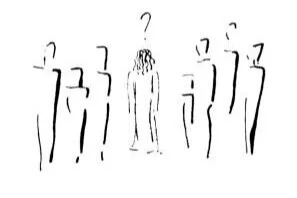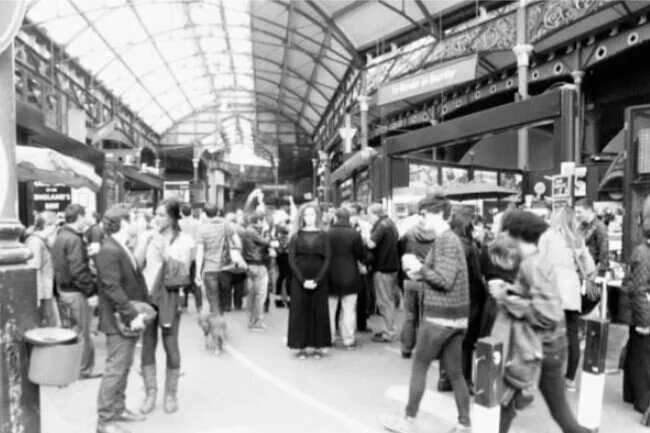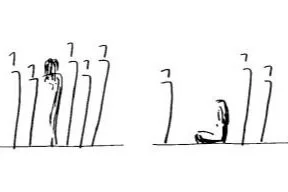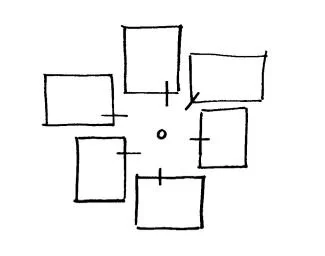Abstract
“We are all condemned to silence unless we create our own relation with the world and try to tie other people into the meaning we thus create. This is what composing is. Doing solely for the sake of doing ... Playing for one’s own pleasure, which alone can create the conditions for new communication ... it relates to the emergence of the free act, selftranscendence, pleasure in being instead of having.”
Introduction
We fear disconnection because connection 'is what gives gurpose and meanings to our lives' (Brown 2010). Every day is a new challenge to how we are going to communicate, how we are going to be understood and if we will understand others. We live in a society that has a power of making our individualities insignificant. Every day’s challenge is to emerge as an individual and be seen.
I believe the sense of belonging is strongly linked to the sense of purpose within a place and a community. As individuals, knowing we have a purpose within a place and a community. As individuals, knowing we have a purpose within a bigger group can be difficult. It depends a lot on culture, on history, on connection established through time and space, It depends on dwelling and rituals and on the time we give to it.
In this portfolio, I will explain how my idea of time, space and disconnection or connection has evolved throughout the year at Central. Starting with the reflective part, I will explain how in Unit 4, "Ill Seen Ill Said" has challenged my ideas on time and place through the fear of death and disconnection Beckett gave to the character.
Then I will attempt to give my perspective on my last project of this year, 'Be Seen'. I will analyse the idea of liminality in culture, in individuality and universality and finally in ritual and repetition. I will then discuss how memory can be influenced and can influence silence and self-knowledge, how memory is charged culturally and how our body is never disconnected from it. Then as a third part of my contextual work, I will interrogate the notion of 'Non-place' and its relation to movement and stillness within my project.
To conclude, I would like to propose a development of 'Be Seen'. I will try to be critical of my work and see where and how it can evolve in order to answer the question: How can I emplace knowing?
Reflective
Earlier this year, Meni Kourmpeti and I worked together on Samuel Beckett's 'Ill Seen, Ill Said' (1982) and the confrontation of the body and a material within Unit 4. We studied the text and analyzed how words were repeated and at the same time transforming the reader's perception of the situation described. The text is written almost as if each sentence was part of the character's thoughts.
The character is shown during her last moments in a room, facing death. The description allows the reader to feel the discomfort and the lack of understanding of the moment. Throughout the text, acceptance of the situation is revealed and the reader finally understands what the situation is. The character has been dwelling with that place during her whole life and is slowly disconnecting herself from it as she is dying.
Reflecting on this work that Meni and I did, I now see the links between 'Ill Seen, Ill Said' and 'Be Seen'. The text has a particular rhythm given by the words' repetition. Time feeds the character with acceptance and belonging. My stillness could only feed me because I took time to repeat it in different environments. As Deleuze's work shows, "Difference inhabits repetition" (Deleuze 1968). Not a single repetition was becoming a habit, it only helped bringing memories into place.
“These two moments, the active constitution of a pure past, and the disparate experience of a present ( ... ) for Deleuze: as in Kant, a radical splitting of the subject into two elements, the I of memory, which is only a process of synthesis, and a self of experience, an ego which undergoes experience.”
The work we did on 'Ill Seen, Ill Said' approached the idea of repetition and what it can do to the meaning of body and space through the use of repeated words in the text such as 'Motionless', 'No sound', 'No answer', 'time', 'little by little', 'eye', 'shadow'... We worked with a succession of filmed images of one or the two of us animating wool and embodying the space. The filming gave motion to our bodies and the material. The Sustained Independent Project showed me that motion can distract us from ourselves and stillness and repetition tend to push us towards thoughts and reflection. What was missing in the Unit 4 video was the attempt to bring the viewer to that state of self-contemplation that the character in 'Ill Seen Ill Said' was in.
I was born in an environment that pushed me to wonder where I came from and which communities I belonged to. Nationalities never were part of the way I was brought up and only became problematic when I had to introduce myself and allow people to categorize me. Although I never was a nomad physically, I have been psychologically. And like in all trips, I have picked up bits and pieces of cultures from my family, friends, and relatives from different cultures and backgrounds.
I have never associated myself with a place - apart from closed, private and limited places - nor have I considered myself as belonging to a community apart from my family and friends. I have been on an 'ongoing cultural transit' that kept me detached from the world of nations, religions and other forms of communities.
In Unit 4 work, motion didn't allow the viewer to think. It just captivated and stimulated curiosity. The SIP allowed me to try to stimulate self-knowledge and recall time and space, using stillness and repetition.
Contextual
1. Liminal State
Ongoing cultural transit
“Just as a man, as a social being, cannot in the long run exist without a tie to a community, so the individual will never find the real justification for his existence, and his own spiritual and moral autonomy, anywhere except in an extra mundane principle capable of relativizing the overpowering influence of external factors.”
I started the project 'Be Seen' feeling I had to find a way to connect to a place and community. When not knowing how to start, one has to try and go from there. So I put myself in the difficult position of standing still facing people in movement in the street. Putting myself in a vulnerable position was the only way for me to face the misunderstanding of my sense of belonging. I faced people in stillness, my feet rooted to the ground, doing the exact opposite of what I do when I'm in a busy urban environment.
“Vulnerability is important It means we are completely alive and that is an extremely important space.”
Universal validity vs. individual facts (Jung)
“The inability to discern what position one should take, how one ought to feel, and what one should do, often leads to paralyzing sense of indecision ”
The lack of movement was inevitable. I was facing a crowd I didn't know anything about and was trying to be as natural as possible. What people might have thought of it must have been far from what I was experiencing. Unless you are standing on that ground facing the unknown and repeating that non-movement, exercising a connection between the moment of that placed experience and all my memories of other experiences, you can't know what I saw and felt.
“Since self-knowledge is a matter of getting to know the individual facts, theories help very little in this respect For the more a theory lays claim to universal validity, the less capable it is of doing justice to the individual facts.”
In 'The Undiscovered Self, Jung says "the bigger the crowd the more negligible the individual becomes" (Jung 1958: 10) In fact one feels the power of masses. Individuality is crushed or has to hide for its own good. Standing straight in front of moving people was going physically against the flow but I was trying to get closer to the mass, allowing it to see me and want me. Perhaps in a controversial way, I was repeatedly trying to go against the usual independence that I keep from the crowd.
Liminal state of repetition
The repetition of the experience in different environments became like a ritual. I was putting myself in a situation that allowed me to go through a change. This silence and stillness gave me the power to merge my thoughts, my memories and my sensations to the environments. As Sarah Pink argues in 'Doing Sensory Ethnography', "Knowing is contingent to connectedness both historically and with others." (Pink 2009: 34) To experience connectedness, one needs to embody a situation, use all senses and engage with what surround him/her. 'Emplaced knowing' is what connects you to time, space and people.
I understand rituals as being acts of solemnness and perseverance to achieve a higher state of connection to something or someone. One can talk about magic. It has power, if not on others, ritual gives power to the one practicing. The same way Jung talks about 'rites d'entree et de sortie', "the performance of a 'magical' action gives the person concerned a feeling of security." (Jung 1959: 18)
This feeling of security only came to me with persistence. The first experience of stillness in space was overwhelming with fear, anxiety and lack of confidence. I had chosen to know through practice but had no idea what it meant. Because people didn't know how it started and how it was going to end, they couldn't see or feel the magic in what they saw. The more I repeated the experience, the more comfortable it became to me because I knew a bit more every time I experienced it. But it was too sudden or aggressive for the observers.
2. Memory
Silence and self-knowledge
“People measure their self-knowledge by what the average person in their social environment knows of himself, but not by the real psychic facts which are for the most part hidden from them. In this respect the psyche behaves like the body with its physiological and anatomical structure, of which the average person knows very little too. ”
Being silent is a mechanism that some people use in order to fit in a crowd without being seen, others might use silence in a group to observe instead of being observed or some might just be voiceless. I decided to be silent to be seen, see and allow connection, not push it away. But silence is never silent, there is always "present noise and the body's relationship with it". (Brown 2009: 204) I listened to myself - it became a ritual of self-listening. It made me see where the connections might be between who I am in those streets and with those people around.
We're affected by the rhythm of things around us, by the smell of the streets, by the sound of people talking. The liveliness of the environment is present in our body and mind. We live the environment. Silence helps listening to it and we naturally remember feelings, sensations, images that we have already experienced. All things around us are 'embodiments of memory' (Counsell & Mock 2009: 1). Connection can always be found between a place and ourselves.
Cultural memory
“There is no perception which is not full of memories. With the immediate and present data of our senses, we mingle a thousands details out of our past experience. ”
Counsell and Mock explain in 'Performance, Embodiment and Cultural Memory' that no one is without memory. We are all charged physically and mentally with the cultures we encountered from where we were born to where we are now. The ways we perceive things and the signals we give to others are always influenced by our somatic memory. Therefore a place has its own memory. People from that place or who have been there long enough to keep a piece of its culture are influenced. We keep an imprint of a place, which unconsciously or consciously becomes part of our body language.
Somatic Memory
“... the senses are also a powerful source of material memories. Such memories are material in that the body carries them somatically - that is, they are registered in our consciousness, or in the case of repression, the unconscious knowledge, of our physical experiences.”
In order to understand who we are, we need to break the wall that we naturally build in order to mask or block the hostile environments. Silence is ideal in order to listen to our senses and remember what we feel and how we perceive the place.
'Be Seen' experience made it clear to me that silence in an overwhelming situation can be rewarding. It clears the mind from parasitical thoughts and allows the senses to embrace the place in its entirety. Whether I had my eyes open or closed, whether the crowd was crushing me or distant, my perception was empowered. It felt as though I could see 360 degrees around me and from above.
Part of the project was to record the sound from a situation as an extra archive of the experience to add to the video and its sound recording. It was interesting to listen to the non-silence that I experience while I was being silent. It provoked my cultural memory with what I was feeling and what I was seeing. However I did not reach a state of meditation and I did not want to disconnect myself from the place.
“The ‘meaning’ of sight, it is proposed, cannot be disassociated from the ambience of its place of perception, which is experiences synaesthetically within the sensorium... Not only does one sense impinge on and affect the others, but perception is affected by cultural histories associated with the senses.”
The experiences I went through were supposed to help me connect with others. Instead, it pushed me to connect with myself. I was observed but silent and non-interacting, I could only get lost in my thoughts and observations of the situation.
3. 'NON-PLACES'
"To walk is to lack a place" (de Certeau)
Andrew Quick explains that ' ... movement makes place less' (Quick in Heathfield 2004: 95) in other words, the more we travel and the more we see, the more we hesitate and get lost in our own identity, the less we connect to a place and community.
For Marc Auge, 'To be born is to be born in a place, to be assigned to residence. In this sense the actual place of birth is a constituent of identity.' (Auge 1995 in in Heathfield 2004: 95) But I believe being born in a place isn't always a main factor in one's identity for it is not the place where one is born that gives him or her a cultural memory and language to communicate. It is the place where and the people with whom one lives that allows us to be who we are as individuals. The moment a person starts remembering somatically and mentally is the moment the person starts being influenced. We can live a place because we have lived places before.
I started being influenced and remembering when I started to connect with people and places. The people I met, the places I visited, the schools and the activities, the languages and body languages I've experienced since I was born made my perception of a place the way it is now. I felt the street where I stood for 'Be Seen' the way I learnt to experience a place. 'Be Seen' didn't bring me back to where I was born, nor to a home, but to a mental and physical place.
De Certeau said 'To walk is to lack a place'. (Heathfield 2004: 95) Dwelling takes time. People who live in a same place their whole life belong to that place by default. They do not know if another place would have felt closer to them. So is stillness fruitful? Can I compare immobility of an individual throughout his/her life to stillness during the time of an ephemeral reflection on self and others, or even meditation? I simply think stillness has different effects on people, depending in the conditions they experience it.
The lack of stillness throughout my life pushed me to try and be still for a series of moments in a city which has never been mine, in communities that I can't imagine I'll be part of someday.
Counsell and Mock explain the 'state of ongoing cultural transit' as being equivalent to having no 'home' because of the families or communities of the travelers 'have no obvious and given body and cultural memories in which their own identities might be anchored'. (Counsell & Mock 2009: 9) Both my parents are immigrants and one of them is from a family of many origins. My identity never settled in one place but many. And in each place, my cultural memory allows me to fit in differently.
Projective
The 'Be Seen' experience to try and connect with a place and people was ephemeral. It made me understand what it means to be still and silent in that kind of situation. I was expecting to meet people through exchanges as simple as eye contact. I felt like the experience didn't push me towards people. It became an experience for myself and not for them. Going back to Sarah Pink's idea on connection, how can I emplace knowing?
“Slowing down allows us to perceive, not only the beginning of action, but how we make contact in relation to others, how we make meaning of the world ... this is a practice of presence.”
Emilyn Claid explains in 'Still Curious' that "still also suggests ongoing-ness, process and duration. The still point resides within the constancy and continuity of movement" (Claid in Carter & O'Shea 1998: 100) So perhaps I would have got closer to my goals if I had decided to stay a whole day in a place and if I had sat down. The tension of standing would have been cancelled. The ephemerality replaced with a longer experience might have helped people want to connect for I would have given them time to come towards me.
Why didn't I embrace more strongly the project with my body? I rushed the experience fearing I wouldn't learn from it. Claid advocates the low pace approach to silence and connection for the contact can be established between people when time is available. "It is about the availability of the body and mind ... of reaching a state of potentiality." (Ritsema 2004 in Carter & O'Shea 1998: 137)
Marina Abramovic's project 'The House with the Ocean View' is a good example of what an experience of connection between people and place can be. She spent days in an installation in a art gallery in New York and concluded her experience by explaining she had done that to invite people 'to look at things from another perspective .. .' She wanted to give time for people to 'heal, time to think, time to love, and time to live, despite death, with death.' (Phelan in Heathfield 2004)
Connection to place, to a community, or to someone is linked to senses and to the possibility of being touched by that connection. In order to dwell in a place, one needs to touch and be touched by that place. This requires vulnerability because we tend to block our environment as an 'everyday shield' in order to dominate the situation. (Brown in Counsell & Mock 2009: 216) Connection takes place because of the possibility of it becoming fulfilling.
“Places are as potentially reverberant as they are reflective, and one’s embodied experiences and memories of them may draw significantly on the interplay of that resounding-ness and reflectiveness.”
Being in the audience is choosing to be silent, choosing not to be seen but merely to see. The observer tends to disconnect from his/her own life. People loose the sense of connection to the ones sitting next to them during the show. They are only physically connected to each other. They breathe and feel emotions together. Do they listen to themselves at all when focusing on a performance? How could we challenge an audience's memory and make people connect with themselves and each other? Strangely enough, in 'Be Seen', I was both the audience and the performer, for my metal connection to people wasn't active and my physical connection to the environment was very much active.
Ross Brown developed a project on 'The Theatre in a Minute's Silence' where he studied the impact of silence on crowds as a ritual to remember people who passed away. He noticed the silence pushed the participants in 'trancelike states of oneness with environment and with others'. (Brown in Counsell & Mock 2009: 203-204) He compared the energy that was created in the group silence to common religious experiences of it.
“... the ‘deeper’ they went into the personal aural state of silence, the further away the general noise of the place became, while specific sonic intrusions seemed to relate more closely to the things they were thinking about than to their auditory sense of location.”
Somatic memory feeds us all the time. We connect joy of the past to feelings of the present and enjoy them. We connect to places because we have connected to similar places before. We connect to people because we have experienced connection with similar people in the past. But connections between people don't only depend on one person. Connection has to be possible on both sides. Senses have to speak to both people in order to connect.
When talking about why men appreciate the comer of a street Bachelard explains how immobility is synonym of peace. Immobility in space can be compared to security of a place. In fact, a lot of people feel at home in a place when staying still. They chose a spot and stay to observe, talk and just live through the place. The connection is so strong that the place is who they are and immobility is naturally safe. The sense of belonging is far from being questioned. Bachelard says "we have to designate the space of our immobility by making it the space of our being". (Bachelard 1958: 137) Belonging to a place means being one with the environment and all that it includes.
Being still to be in a place can only make sense with time. Once again time and space cannot be disconnected. We can't experience one without the other. 'Be Seen' was a fragment of what living the place could be like. Being vulnerable is helpful to connect, but time is crucial to allow a non-place to become a place.
What would happen if an audience entered a 'nonplace', with no start nor end and was pushed to stay for a while and reach stillness? Would they learn about themselves? Can we push people to connect with themselves and others? How could I develop the audience's sense of connection? And how could I help people to connect with me, or help myself connect with others?
Creating a 'Be Seen' structure in a public space that would push people to spend time with themselves, with others and with me in unusual ways could be the next step for this project. People would go alone into separate rooms linked visually and stay for a set period of time. Each room's environment would be disconnected from the actual setting of the structure itself. A projection of typical environments, such as the view of a crowded street, a desert, a bedroom, a cinema, a street in Paris or one in Havana. Each room would be connected visually to me, standing in the middle of the installation.
A key question would be asked at the door of each space and it would trigger a particular setting based on all sorts of factors. This would be a research project that would analyse the different reactions and would allow the project to evolve depending on those results. Different interior designs for the rooms would either force people to stay standing or to sit down, to move or to stay still during the time of the experience.
Having an audience enter that structure would trigger openness to possibilities. In becoming part of that temporary event, one would establish connection in a different manner from usual. Being able to peep at other rooms and at me through small openings would allow people to communicate if they wished. They would be responsible for deciding whether to initiate such exchanges.
Since cultural influences affect us all both somatically and mentally, might these performances stimulate people through culture is the same manner that rituals trigger inner feelings and sensations? Each room would have specific rituals and environments from all over the world projected on its walls, would have a particular sound and smell and would have a specific interior arrangement.
My hope for this project is that the environment in each room would remarkably affect and stimulate the thoughts of individual participants. But can we control strangers' memories?
Bibliography
Light, A. (ed.)(1999) 'The Vibe History of Hip hop', Three Rivers Press
Palmer, S., Popat, S. (2010) 'Dancing in the streets - The sensuous manifold as a concept for designing experience' (p.107-116) in Collins, J., Nisbet, A., 'Theatre and Performance Design, A reader in Scenogrpahy', Oxon, Routledge
Ginwright, S.A. (2004) 'BLACK IN SCHOOL: Afrocentric Reform, Urban Youth, and the Promise of Hip-Hop Culture', Columbia University, Teachers College
Long, RA. (1989) 'The Black Tradition in American Dance', London, Multimedia Books Limited
http:/ /www.zoonation.co.uk/page/zoonation-ethos
(accessed 6/05/12)
Terkourafi, M. (2012) 'The Languages of Global Hip-Hop (Advances in Sociolinguistics)', Continuum
Rayner, N. (2010), 'Dance Feature: Urban Dance', Dance Today, Vol. 54 Issue 103, p.32-36
Wisner, H. (2010) 'Crash Course: Hip Hop', Dance Magazine, Vol. 81 Issue 10, p.82-85
Amin, T. (2010) 'Demystifying Hip Hop Dance?', Dance Chronicle, Vol. 33 Issue 3, p.490-493
Ibrahim, A. (2003) 'Marking the Unmarked: Hip Hop, the Gaze and the African Body in North America', Critical Arts: A South-North Journal of Cultural & Media Studies, Vol.17 Issue½ , p.52-70
Engel, L. (2001) 'Body Poetics of Hip Hop Dance Styles in Copenhagen', Dance Chronicle, Vol.24 Issue 3, p.351-373
Osumare, H. (2001) 'Beat Streets in the Global Hood: Connective Marginalities in the Hip Hop Globe', Journal of American and Comparative Culture, Vol.24 Issue½, p.171-181
Davis, A. (1984) 'Women, Culture and Politics', London, The Women's Press Limited 1990
http://www.ted.com/talks/brene_brown_on_vulnerability.html
(accessed April 2012)
http://www.mocp.org/collections/permanent/lee_nikki_s.php
(accessed 18/05/12)
Bachelard, G. (1958) 'The Poetics of Space', Presses Universitaires de France
Carter, A., O'Shea, J. (eds.) (1998), 'The Routledge Dance Studies Reader', Oxon, Routledge
Pink, S. (2009) 'Doing Sensory Ethnography', London, SAGE Publications Ltd
http://www.ted.com/talks/eve_ensler.html (accessed 2/06/12)
http://www.ted.com/talks/thelma_golden_how _art_gives_shape_to_c ultural_change.html (accessed 2/06/12)
http://www.philipshepherd.com/book/ (accessed 2/06/12)
Jung, C. (195 7) 'The Undiscovered Self, Zurich, Rascher
Reason, M. (2006) 'Documentation, Disappearance and the Representation of Live Performance', New York, Palgrave MacMillan
Heathfield, A. and Live Art Performance Agency (eds.) (2004) 'Art and Performance: Live', London, Tate Publishing
Phelan, P., 'On Seeing the Invisible: Marina Abramovic's The House with the Ocean view' in Heathfield, A. (ed.) (2004) 'Art And Performance: Live', London, Tate Publishing p.16-27
Counsell, C., Mock, R. (eds.) (2009) 'Performance, Embodiment and Cultural Memory', Newcastle upon Tyne, Cambridge Scholars Publishing
Jones, A., Heathfield, A. (eds.) (2012) 'Perform Repeat Record: Live Art in History', Bristol, Intellect
Denby,E. (1965) 'Dancers Buildings and People in the Streets', New York, Horizon Press
Howes, D. (ed.) (2005) 'Empire of the Senses: The Sensual Culture Reader', Oxford, Berg
Schechner, R. (1993) 'The Future of Ritual - Writing on Culture and Performance', London, Routledge
http://www.iep.utm.edu/deleuze/ (accessed 07 /09/12)
Beckett, S. (1981) 'Ill Seen, Ill Said' in Van Hulle, D. (2009) 'Company, Ill Seen Ill Said, Worstward Ho, Stirrings Still', London, Farber and Farber

